Speaker
Description
X-ray and gamma-ray imaging techniques are crucial in various fields. In the field of nuclear medicine, single-photon emission tomography (SPECT) and positron emission tomography (PET) scans are the two most commonly used techniques; however, both techniques only image a specific energy range of either X-rays or gamma rays. SPECT can only image gamma rays with energies less than 300 keV using a collimator, whereas PET can image only 511 keV gamma rays from positron emitters. Compton cameras have attracted attention because of their capability of imaging above 1 MeV.
We propose a hybrid Compton camera (HCC) that realizes simultaneous Compton and pinhole imaging within a single detector system. Similar to conventional Compton cameras, the HCC consists of two layers of scintillator arrays. The front detector acts as a scatterer for high-energy photons (>200 keV) and an active pinhole for low-energy photons (<200 keV). Furthermore, we developed a system consisting of multiple HCCs to simultaneously realize three modalities: Compton, pinhole, and PET imaging. We successfully performed the simultaneous imaging of Cs-137 (Compton mode; 662 keV), Na-22 (PET mode; 511 keV), and Am-241 (pinhole mode; 60 keV) within the same field of view. Further, the 3D distribution of an At-211 tracer inside a mouse was imaged. We also investigated the effectiveness of implementing BGO active shields to enhance the imaging performance. Our study introduces a new imaging modality in nuclear medicine.
